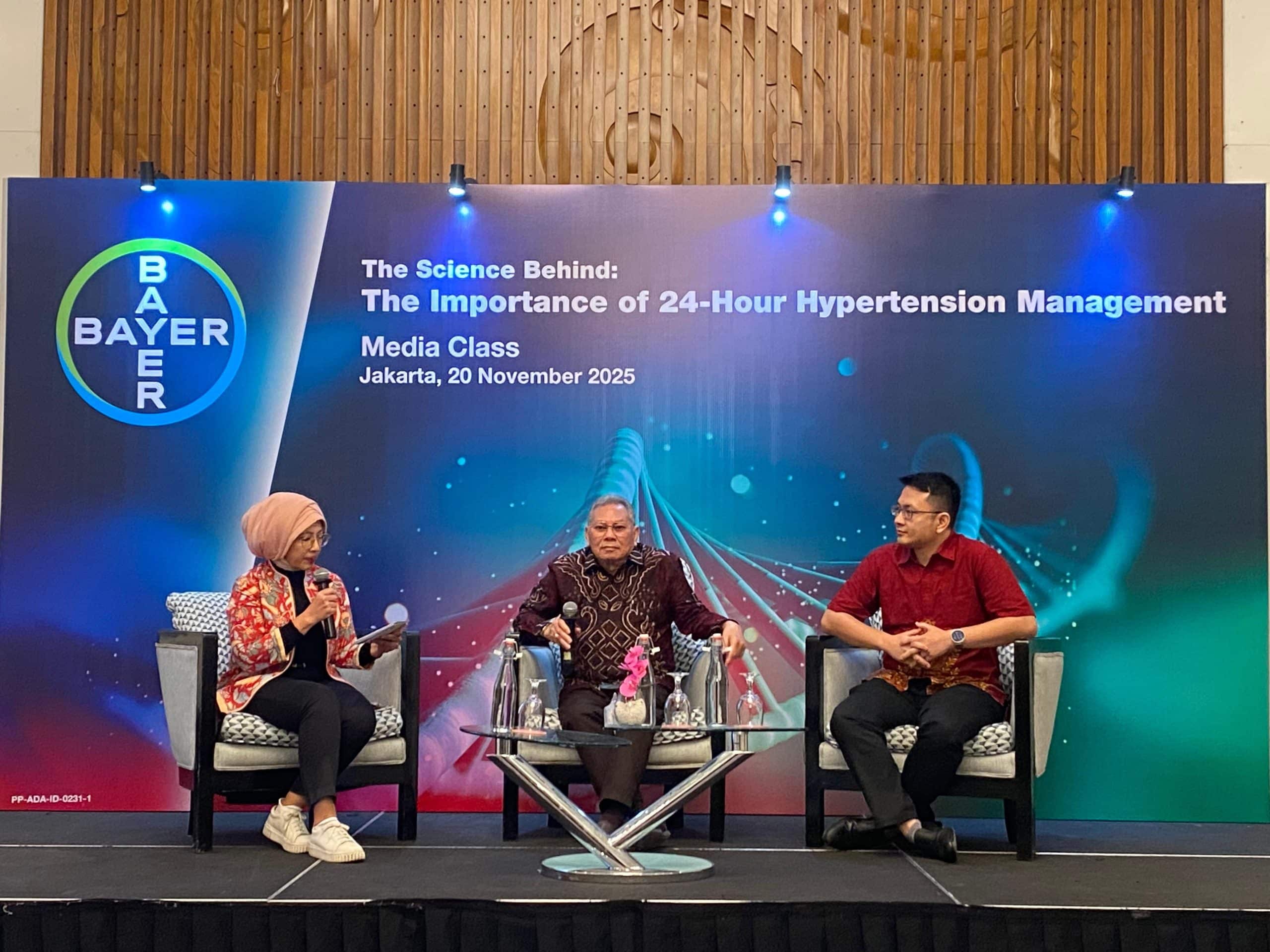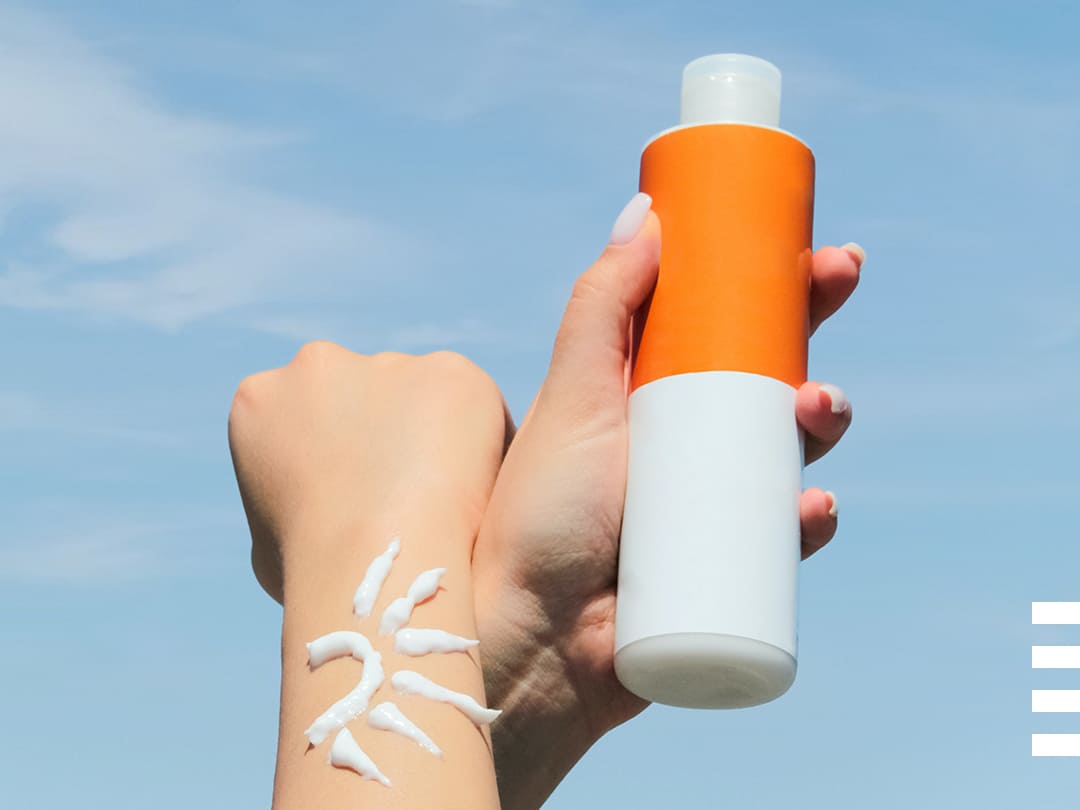
Bayer Indonesia Urges Public to Understand Hypertension Control to Prevent Serious Complications

Jakarta – Hypertension remains one of Indonesia’s most pressing health challenges. Today, one in three adults lives with high blood pressure, yet only 18.9 percent manage to keep it under control. This silent crisis puts millions at risk of severe complications, including stroke, heart attack, and kidney failure—often without any clear symptoms.
In commemoration of National Health Day, Bayer Indonesia emphasized the urgency of public education on blood pressure management through the session “The Science Behind: The Importance of 24-hour Hypertension Management.”The program highlights scientific approaches to maintaining stable blood pressure throughout the day, especially addressing the danger of morning surge. This sudden spike in blood pressure occurs shortly after waking and significantly increases cardiovascular risk.
According to the World Health Organization (WHO), 1.4 billion people aged 30–79 worldwide live with hypertension. Although nearly half have been diagnosed or are receiving treatment, only 23 percent—or about 320 million—achieve controlled blood pressure. In Indonesia, the prevalence reaches 30.8 percent among adults, yet only 8.6 percent receive a proper medical diagnosis, and fewer than half adhere to prescribed antihypertensive medication.
Internal Medicine and Hypertension Consultant dr. Tunggul D. Situmorang, Sp.PD-KGH, underscores the dangers of untreated high blood pressure. “Hypertension is called ‘the silent killer’ for a reason. It often shows no symptoms yet quietly damages vital organs, from the heart and kidneys to the brain and blood vessels,” he said (20 Nov). He explained that 81.1 percent of Indonesian patients still have uncontrolled hypertension, largely due to poor medication adherence and limited home monitoring.
Human blood pressure follows a natural circadian rhythm, with the morning surge being one of the most critical phases. This sharp rise typically occurs between 6:00 a.m. and 10:00 a.m., when cardiovascular events are most likely to happen. According to dr. Tunggul, “Morning surge is a high-risk moment. This spike can trigger stroke or heart attack, especially among patients with stage 2 and 3 hypertension.”
He urged patients to monitor their blood pressure both morning and night and to take medication consistently. “Adherence to therapy is essential for maintaining stable blood pressure over 24 hours and preventing serious complications,” he added. Stability, he emphasized, is the foundation of long-term cardiovascular protection.
Hypertension is diagnosed when blood pressure consistently exceeds 130/85 mmHg. Achieving optimal control requires a holistic approach that combines medical therapy with healthy lifestyle habits. Patients are advised to maintain a balanced diet rich in fruits, vegetables, and lean proteins while limiting salt intake and engaging in at least 30 minutes of physical activity on most days.
Patients Play a Central Role in Hypertension Management
Managing hypertension is not solely the responsibility of healthcare providers; patients themselves play a decisive role. Daily home monitoring, medication adherence, and accurate reporting enable doctors to make timely and precise clinical decisions. “Doctors rely on patient-provided data to adjust therapy—whether intensifying medication, changing drug types, or recommending lifestyle improvements,” dr. Tunggul explained.
He also stressed the need for open communication between patients and medical professionals. “Not all antihypertensive drugs work the same. Effective therapy must be evidence-based, accessible, well-tolerated, and clinically proven,” he said. Such clarity ensures that patients remain committed to their long-term treatment plans.
Clinical evidence shows that lowering systolic blood pressure by just 10 mmHg can reduce stroke risk by 27 percent, major cardiovascular events by 20 percent, and heart failure by 28 percent. These findings reaffirm that consistent medication use and routine monitoring offer substantial protective benefits.
24-Hour Blood Pressure Control: Why It Matters
International guidelines, including WHO 2021 and Indonesia’s PERHI 2021, define normal blood pressure as below 130/85 mmHg. Reaching this target requires round-the-clock stability—not just temporary control during clinic visits. Bayer supports this need through innovative therapies designed to maintain steady blood pressure throughout the day.
One such therapy uses Osmotic-controlled Release Oral Delivery System (OROS) technology in Nifedipine GITS, enabling a slow and consistent release of medication over 24 hours. This approach helps prevent morning surge and keeps blood pressure stable with just one daily dose. Nifedipine GITS, a type of calcium channel blocker, is particularly effective among Asian and older populations.
dr. Irawan Septian Nugroho, MBBS, MMed (Int. Med), Medical Lead at Bayer Indonesia, explained the mechanism behind the technology. “OROS uses osmotic pressure to push the active ingredient out of the tablet gradually throughout the day. As a result, drug levels remain smooth and stable for 24 hours, improving blood pressure control and patient adherence,” he said.
Large-scale clinical trials such as INSIGHT and ACTION have confirmed the long-term safety and efficacy of Nifedipine GITS. Over more than five years of follow-up, the therapy consistently lowered blood pressure without causing hypotension or increased heart rate. These findings strengthen its role as a reliable option for long-term hypertension management.
“Through science-based education and innovative treatments like OROS-based Nifedipine GITS—now available through the National Health Insurance (JKN)—Bayer remains committed to supporting optimal hypertension care in Indonesia,”dr. Irawan concluded. His message reflects Bayer’s broader mission: protecting patients from life-threatening complications and helping them lead healthier, more productive lives.






